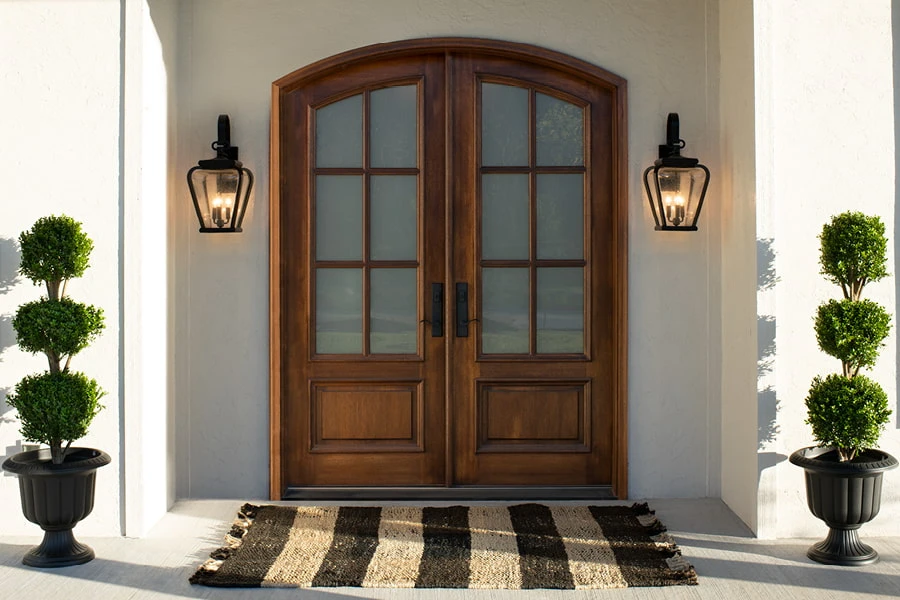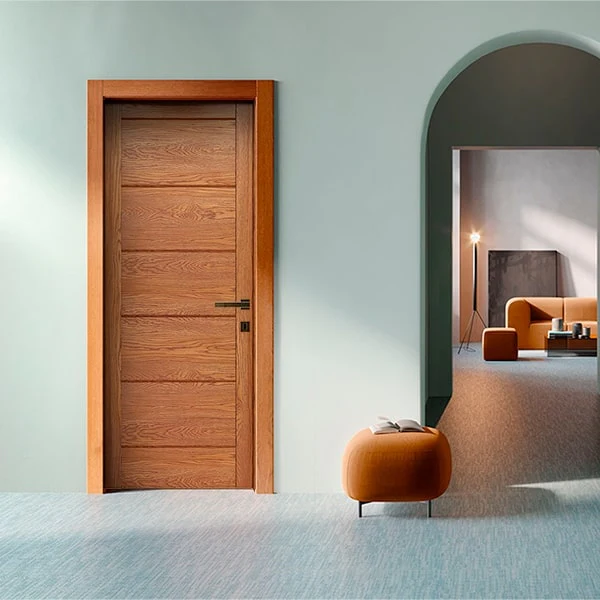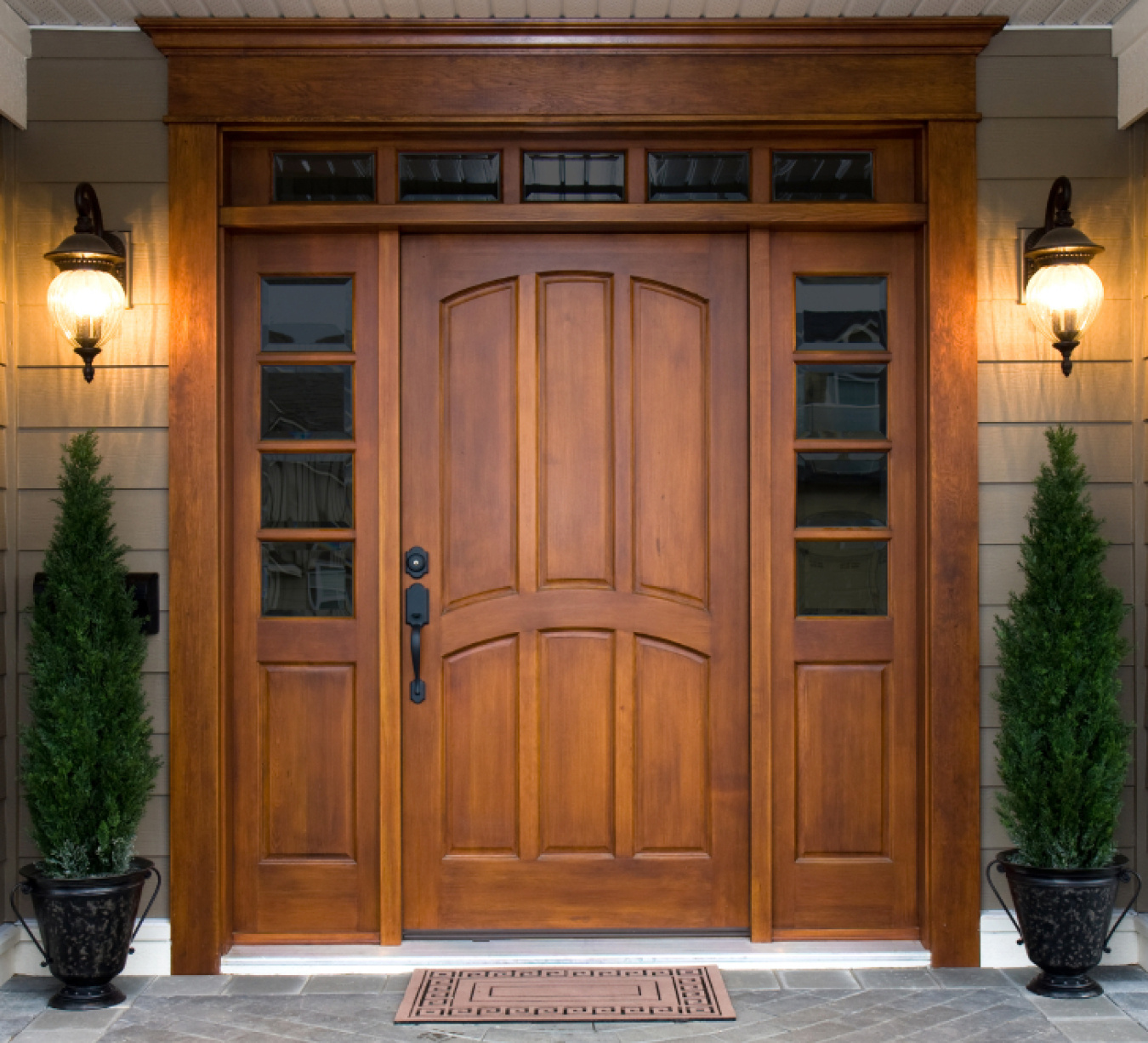Doors have been an integral part of human civilization for thousands of years. More than just a physical barrier between spaces, a door symbolizes security, privacy, style, and status. From ancient stone slabs to today’s smart doors, the journey of the door mirrors the evolution of architecture, engineering, and design. In this comprehensive article, we will explore the history of doors, their types, materials used, technological advancements, and how they play a key role in both residential and commercial settings.
History of Doors
The history of doors dates back to ancient civilizations such as Egypt, Babylon, and Rome. The earliest known doors were simple slabs of wood used to block entrances. In Egypt, doors were often made from a single piece of wood and sometimes ornately carved with religious or cultural motifs. Ancient tombs reveal doors decorated with elaborate hieroglyphics, symbolizing the passage to the afterlife.
In Greece and Rome, doors became more sophisticated. The Romans introduced double doors, sliding doors, and folding doors. Hinges made of bronze or iron were common, and doors began to reflect a household’s wealth. In medieval Europe, doors were reinforced with iron studs and locks for security purposes and were often set in large stone arches.
Symbolic and Cultural Importance
Doors have always had symbolic meanings. In literature and religion, a door often represents opportunity, transition, or protection. In Christianity, the “door to salvation” is a common metaphor. In Hinduism and Buddhism, temple doors are often heavily decorated, symbolizing the passage to spiritual awakening.
Feng Shui, the Chinese practice of harmonizing one’s environment, emphasizes the importance of the “main door” or “mouth of chi,” as it is the entry point for energy to flow into a home.

Types of Doors
Over the centuries, doors have evolved in both function and form. Here are the most common types of doors used today:
1. Hinged Doors
These are the most common type of doors, attached to a frame with hinges on one side, allowing them to swing open.
2. Sliding Doors
These doors slide horizontally along tracks, making them ideal for saving space. They are popular in closets, patios, and modern homes.
3. Folding Doors (Bi-Fold or Accordion Doors)
Made of multiple panels that fold back against each other, these doors are often used for large openings, closets, or room dividers.
4. Revolving Doors
Typically seen in commercial buildings, revolving doors allow multiple people to enter and exit simultaneously without allowing air or noise to escape.
5. French Doors
Consisting of two doors with glass panes, French doors open outwards or inwards and are often used to connect interior spaces to gardens or patios.
6. Pocket Doors
These slide into a compartment in the wall, saving space and providing a clean, minimalist look.
7. Dutch Doors
Split horizontally so that the top and bottom halves can be opened independently. These are popular in rural homes and for safety in nurseries.
Materials Used in Door Construction
The material used for doors affects its aesthetics, durability, security, and cost. Here are the most common materials:
1. Wood
Wooden doors are timeless and versatile. Hardwoods like oak, mahogany, and teak are preferred for their durability and beauty. Softwoods like pine are more affordable but less durable.
2. Glass
Used primarily in modern and French doors, glass adds elegance and allows natural light. Tempered or laminated glass is used for safety and insulation.
3. Steel
Steel doors are highly secure and weather-resistant, often used for exterior doors in commercial and industrial buildings.
4. Fiberglass
Durable, low maintenance, and energy efficient, fiberglass doors can mimic wood grain and are ideal for extreme climates.
5. Aluminum
Lightweight and resistant to rust, aluminum is common in sliding and patio doors.
6. PVC or uPVC
Used in budget-friendly doors, especially for bathrooms and internal doors. They are water-resistant but less durable.
7. Composite
Made from a mix of materials such as wood fibers, PVC, and insulating foam, composite doors are energy-efficient and resistant to weather and wear.
Technological Innovations: The Rise of Smart Doors
As homes become smarter, so do doors. Smart doors come with electronic locks, fingerprint scanners, cameras, and even AI-driven systems. Features include:
- Keyless Entry using smartphone apps, keypads, or biometrics.
- Remote Monitoring with cameras and sensors.
- Voice Control integrated with smart home systems like Alexa or Google Assistant.
- Security Alarms that trigger during unauthorized access.
Smart doors not only enhance security but also provide convenience and energy efficiency.
Security and Safety
A door’s primary function is to offer protection. For enhanced security:
- Deadbolt Locks are a must for external doors.
- Reinforced Frames prevent forced entries.
- Peepholes and Video Doorbells allow for screening visitors.
- Fire-Resistant Doors, especially in commercial buildings or apartments, provide safety during emergencies.
Aesthetic and Functional Design
Modern doors do more than provide security—they are part of the home’s interior design. Customization options include:
- Panel Design – Raised, flat, or carved panels.
- Color and Finish – Stained wood, painted finishes, or laminate.
- Decorative Glass Inserts – For elegance and natural lighting.
- Hardware – Knobs, handles, and hinges in various finishes like brass, chrome, and matte black.
Doors in Commercial and Industrial Use
Doors in commercial settings must meet stricter standards:

- Fire-Rated Doors for safety.
- Access-Control Doors for restricted areas.
- Automatic Sliding or Revolving Doors for high-traffic entryways.
- Heavy-Duty Roll-Up Doors in warehouses and garages.
Industrial doors also focus on durability, insulation, and ease of maintenance.
Environmental Considerations
With growing concerns about sustainability, eco-friendly door materials are becoming popular:
- Bamboo and Reclaimed Wood for sustainability.
- Recycled Steel or Aluminum doors reduce environmental impact.
- Energy-Efficient Insulated Doors help reduce heating and cooling costs.
Certifications such as Energy Star or LEED ensure compliance with green building standards.
Door Maintenance Tips
Proper maintenance extends a door’s lifespan:
- Clean regularly to prevent dirt buildup.
- Lubricate hinges to avoid squeaking.
- Check for warping or cracks, especially in wooden doors.
- Repaint or refinish when the surface starts to fade or peel.
- Inspect seals and weather stripping for air leaks.
Conclusion
The humble door is far more than a utilitarian piece of architecture. It embodies style, function, culture, and innovation. Whether it’s a hand-carved wooden entrance to a palace, a sliding glass door to a modern patio, or a smart door protecting a digital home, doors serve as both guardians and gateways. Understanding the types, materials, technology, and maintenance of doors can help homeowners, builders, and designers make informed decisions that blend safety, beauty, and function.
As we step into the future, doors will continue to evolve—becoming smarter, more sustainable, and more integral to the way we interact with our homes and the world beyond.
FAQs About Doors
Q1: What is the most secure type of door for a home?
A steel or solid-core wooden door with a deadbolt lock and reinforced frame offers high security.
Q2: What is the difference between a panel door and a flush door?
A panel door has raised or sunken designs, while a flush door has a smooth, flat surface.
Q3: Are glass doors safe?
Tempered or laminated glass is used for safety. You can also install security films or reinforced glass.
Q4: How often should I replace a door?
With proper maintenance, a door can last 20–30 years. Replace when it’s damaged, warped, or no longer efficient.
Q5: Can I install a smart lock on any door?
Most smart locks fit standard doors, but it’s best to check compatibility with your door’s material and thickness.Doors have been an integral part of human civilization for thousands of years. More than just a physical barrier between spaces, a door symbolizes security, privacy, style, and status. From ancient stone slabs to today’s smart doors, the journey of the door mirrors the evolution of architecture, engineering, and design. In this comprehensive article, we will explore the history of doors, their types, materials used, technological advancements, and how they play a key role in both residential and commercial settings.
History of Doors
The history of doors dates back to ancient civilizations such as Egypt, Babylon, and Rome. The earliest known doors were simple slabs of wood used to block entrances. In Egypt, doors were often made from a single piece of wood and sometimes ornately carved with religious or cultural motifs. Ancient tombs reveal doors decorated with elaborate hieroglyphics, symbolizing the passage to the afterlife.
In Greece and Rome, doors became more sophisticated. The Romans introduced double doors, sliding doors, and folding doors. Hinges made of bronze or iron were common, and doors began to reflect a household’s wealth. In medieval Europe, doors were reinforced with iron studs and locks for security purposes and were often set in large stone arches.
Symbolic and Cultural Importance
Doors have always had symbolic meanings. In literature and religion, a door often represents opportunity, transition, or protection. In Christianity, the “door to salvation” is a common metaphor. In Hinduism and Buddhism, temple doors are often heavily decorated, symbolizing the passage to spiritual awakening.
Feng Shui, the Chinese practice of harmonizing one’s environment, emphasizes the importance of the “main door” or “mouth of chi,” as it is the entry point for energy to flow into a home.
Types of Doors
Over the centuries, doors have evolved in both function and form. Here are the most common types of doors used today:
1. Hinged Doors
These are the most common type of doors, attached to a frame with hinges on one side, allowing them to swing open.
2. Sliding Doors
These doors slide horizontally along tracks, making them ideal for saving space. They are popular in closets, patios, and modern homes.
3. Folding Doors (Bi-Fold or Accordion Doors)
Made of multiple panels that fold back against each other, these doors are often used for large openings, closets, or room dividers.
4. Revolving Doors
Typically seen in commercial buildings, revolving doors allow multiple people to enter and exit simultaneously without allowing air or noise to escape.
5. French Doors
Consisting of two doors with glass panes, French doors open outwards or inwards and are often used to connect interior spaces to gardens or patios.
6. Pocket Doors
These slide into a compartment in the wall, saving space and providing a clean, minimalist look.
7. Dutch Doors
Split horizontally so that the top and bottom halves can be opened independently. These are popular in rural homes and for safety in nurseries.
Materials Used in Door Construction
The material used for doors affects its aesthetics, durability, security, and cost. Here are the most common materials:
1. Wood
Wooden doors are timeless and versatile. Hardwoods like oak, mahogany, and teak are preferred for their durability and beauty. Softwoods like pine are more affordable but less durable.
2. Glass
Used primarily in modern and French doors, glass adds elegance and allows natural light. Tempered or laminated glass is used for safety and insulation.
3. Steel
Steel doors are highly secure and weather-resistant, often used for exterior doors in commercial and industrial buildings.
4. Fiberglass
Durable, low maintenance, and energy efficient, fiberglass doors can mimic wood grain and are ideal for extreme climates.
5. Aluminum
Lightweight and resistant to rust, aluminum is common in sliding and patio doors.
6. PVC or uPVC
Used in budget-friendly doors, especially for bathrooms and internal doors. They are water-resistant but less durable.
7. Composite
Made from a mix of materials such as wood fibers, PVC, and insulating foam, composite doors are energy-efficient and resistant to weather and wear.
Technological Innovations: The Rise of Smart Doors
As homes become smarter, so do doors. Smart doors come with electronic locks, fingerprint scanners, cameras, and even AI-driven systems. Features include:
- Keyless Entry using smartphone apps, keypads, or biometrics.
- Remote Monitoring with cameras and sensors.
- Voice Control integrated with smart home systems like Alexa or Google Assistant.
- Security Alarms that trigger during unauthorized access.
Smart doors not only enhance security but also provide convenience and energy efficiency.
Security and Safety
A door’s primary function is to offer protection. For enhanced security:
- Deadbolt Locks are a must for external doors.
- Reinforced Frames prevent forced entries.
- Peepholes and Video Doorbells allow for screening visitors.
- Fire-Resistant Doors, especially in commercial buildings or apartments, provide safety during emergencies.
Aesthetic and Functional Design
Modern doors do more than provide security—they are part of the home’s interior design. Customization options include:
- Panel Design – Raised, flat, or carved panels.
- Color and Finish – Stained wood, painted finishes, or laminate.
- Decorative Glass Inserts – For elegance and natural lighting.
- Hardware – Knobs, handles, and hinges in various finishes like brass, chrome, and matte black.
Doors in Commercial and Industrial Use
Doors in commercial settings must meet stricter standards:
- Fire-Rated Doors for safety.
- Access-Control Doors for restricted areas.
- Automatic Sliding or Revolving Doors for high-traffic entryways.
- Heavy-Duty Roll-Up Doors in warehouses and garages.
Industrial doors also focus on durability, insulation, and ease of maintenance.
Environmental Considerations
With growing concerns about sustainability, eco-friendly door materials are becoming popular:
- Bamboo and Reclaimed Wood for sustainability.
- Recycled Steel or Aluminum doors reduce environmental impact.
- Energy-Efficient Insulated Doors help reduce heating and cooling costs.
Certifications such as Energy Star or LEED ensure compliance with green building standards.
Door Maintenance Tips
Proper maintenance extends a door’s lifespan:
- Clean regularly to prevent dirt buildup.
- Lubricate hinges to avoid squeaking.
- Check for warping or cracks, especially in wooden doors.
- Repaint or refinish when the surface starts to fade or peel.
- Inspect seals and weather stripping for air leaks.
Conclusion
The humble door is far more than a utilitarian piece of architecture. It embodies style, function, culture, and innovation. Whether it’s a hand-carved wooden entrance to a palace, a sliding glass door to a modern patio, or a smart door protecting a digital home, doors serve as both guardians and gateways. Understanding the types, materials, technology, and maintenance of doors can help homeowners, builders, and designers make informed decisions that blend safety, beauty, and function.
As we step into the future, doors will continue to evolve—becoming smarter, more sustainable, and more integral to the way we interact with our homes and the world beyond.
FAQs About Doors
Q1: What is the most secure type of door for a home?
A steel or solid-core wooden door with a deadbolt lock and reinforced frame offers high security.
Q2: What is the difference between a panel door and a flush door?
A panel door has raised or sunken designs, while a flush door has a smooth, flat surface.
Q3: Are glass doors safe?
Tempered or laminated glass is used for safety. You can also install security films or reinforced glass.
Q4: How often should I replace a door?
With proper maintenance, a door can last 20–30 years. Replace when it’s damaged, warped, or no longer efficient.
Q5: Can I install a smart lock on any door?
Most smart locks fit standard doors, but it’s best to check compatibility with your door’s material and thickness.



Leave a Reply